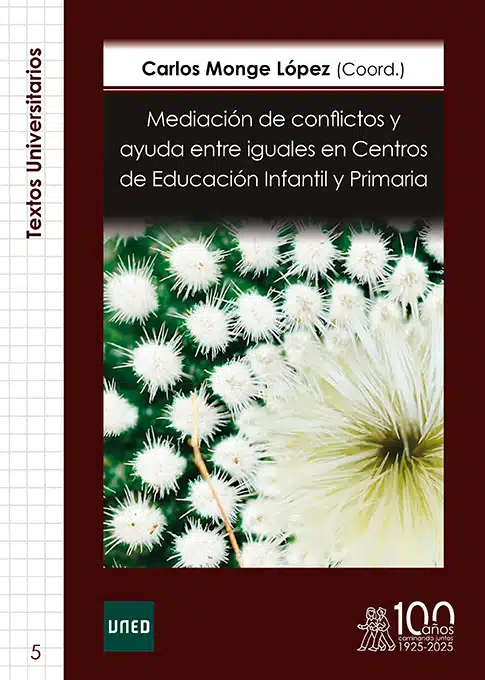
Flores, M., & Duran, D. (2025). Un programa de tutoría entre iguales para la resolución cooperativa de problemas matemáticos de la vida cotidiana. En C. Monge (Ed.), Mediación de conflictos y ayuda entre iguales en Centros de Educación Infantil y Primaria (pp. 219–249). Morata.

Duran, D. (2024). Evolución en las Tutorías. Dins S. García Ávila (Coord.), Alcances y retos en la formación universitaria (pp. 17–35). Universidad Nacional Autónoma de México (UNAM).
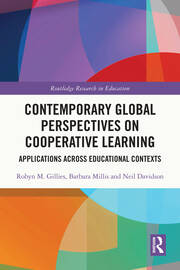
Duran, D. (2023). Can students learn by teaching their peers during cooperative learning? In R. M. Gillies, B. Millis & N. Davidson (Eds.), Contemporary global perspectives on cooperative learning: Applications across educational contexts. Routledge
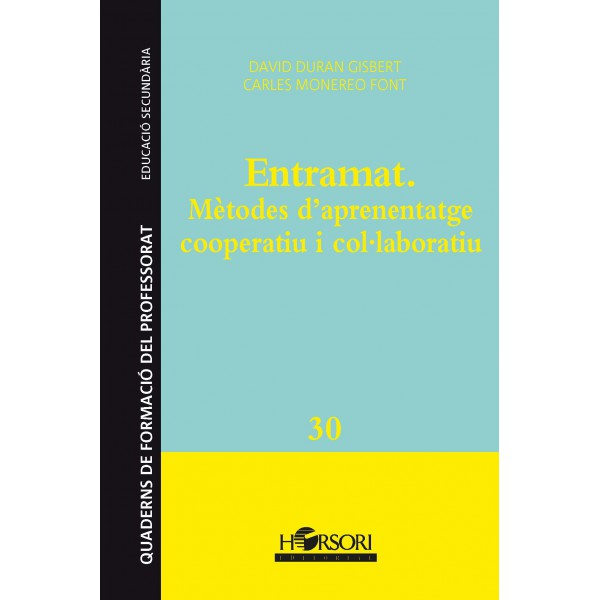
Duran, D., & Monereo, C. (2021). Entramat: Mètodes d’aprenentatge cooperatiu i col·laboratiu. Horsori.
Updated edition in catalan of Entramat: Cooperative learning methods (peer tutoring) and collaborative (teaching peer tutoring), explained in practice through narratives. The narrative – which allow us to “see” the method in action – are accompained by guides on the method in question.
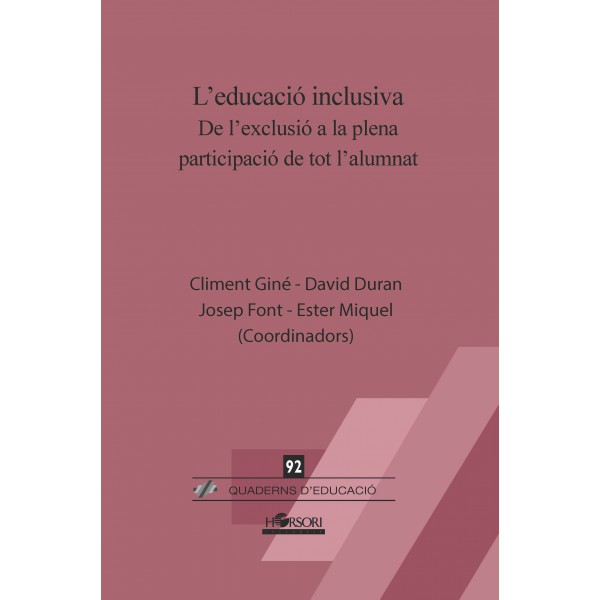
Giné, C., Duran, D., Font, J., & Miquel, E. (Coords.) (2020). L’educació inclusiva: De l’exclusió a la plena participació de tot l’alumnat. Horsori.
This is an updated translation of the previous publication in Spanish. In this book, as well as other interesting chapters on peer learning, you will find a chapter by Teresa Huguet on collaborative work between teachers; a chapter by David Duran about inclusion and peer learning; and a chapter by Ester Miquel on the use of the Index for inclusion in a group of Catalan schools.
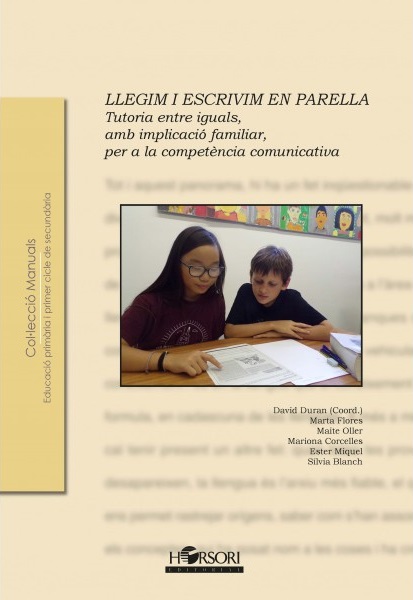
Duran, D. (Coord.), Flores, M., Oller, M., Corcelles, M., Miquel, E., & Blanch, S. (2018). Llegim i escrivim en parella: Tutoria entre iguals, amb implicació familiar, per a la competència comunicativa. Horsori.
This book is a thorough update of the first and second edition. The programme is described in detail, including resources and educational materials, both for students and families, in order to easily bring it into practice. This programme has been used and evaluated in a large number of schools and high schools.
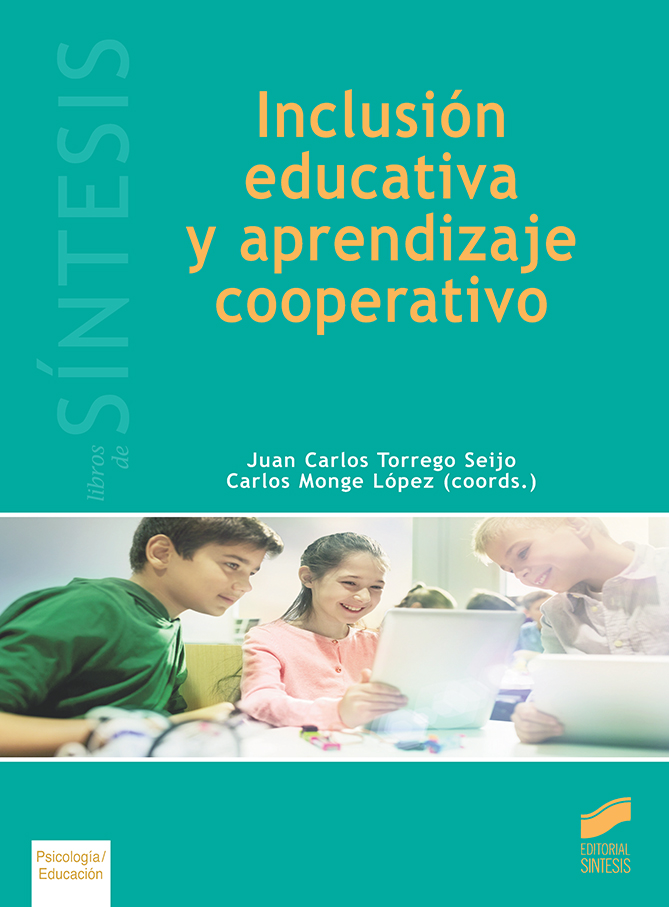
Duran, D. (2018). Aprendizaje entre iguales: Evidencias, instrumento para la inclusión y aprendizaje del alumno que ofrece ayuda. A J. C. Torrego & C. Monge (Coords.), Inclusión educativa y aprendizaje cooperativo (pp. 173-199). Editorial Síntesis.
In this chapter the main scientific evidence that supports peer learning, both cooperative learning and peer tutoring, in the field of school education is reviewed. Research that shows how peer learning can be a methodology for inclusion is reviewed as well. And finally evidence for advanced students’ opportunities of learning by teaching their peers is provided.
Book review in Revista de Educación.
Book review in Pulso.
Book review in Estudios sobre Educación.
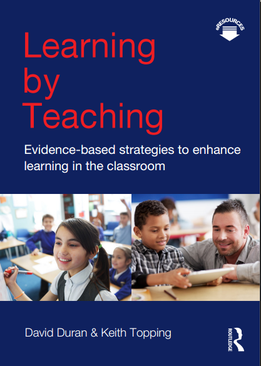
Duran, D., & Topping, K. J. (2017). Learning by teaching: Evidence-based strategies to enhance learning in the classroom. Routledge.
This book, based on the previous Aprenseñar (Duran, 2014, 2016) provides an essential overview of “learning by teaching”, unpacking the underpinning theory, research evidence and practical implications of peer learning in a variety of classroom contexts. It locates this phenomenon in current conceptions of learning and teaching, far removed from traditional ideas of one-way transmission of knowledge. Exactly what happens to promote learning by teaching is explored. Examples of learning by teaching are discussed and it is noted that this happens in school, university and the workplace, as well as through the Internet. Learning by teaching within the student body is then explored, and many different methods described.
Book review in Educational Research and Evaluation.
Book review in Innovations in Education and Teaching International.
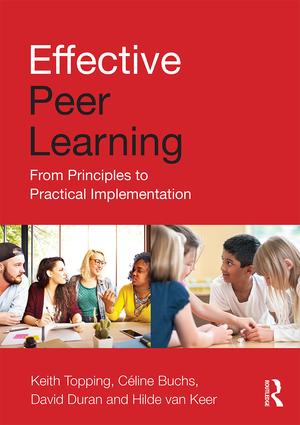
Topping, K., Buchs, C., Duran, D., & Van Keer, H. (2017). Effective peer learning: From principles to practical implementation. Routledge.
The aim of this book is to help practitioners establish well-structured and effective peer learning projects using a variety of methods. It introduces and defines cooperative learning (mutual peer interaction) and peer tutoring (directional peer interaction) – outlining general organisational principles that will help practitioners implement peer learning in either of these forms. The authors consider how to prepare and train learners to undertake their roles effectively, and how to organise and monitor the process of interaction as it is happening. They then look at how these systems actually operate in the classroom, exploring how the organisational principles work in practice and giving many practical examples. Amog them some of the GRAI educational programmes are presented.
Book review in Revista de Educación, in Spanish and English.
Book review in IASCE Newsletter, in English.
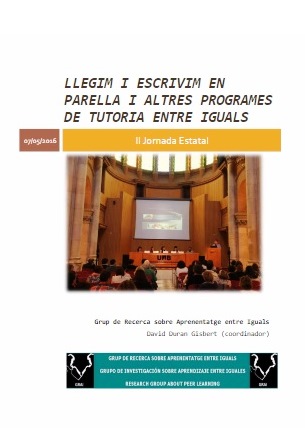
Duran, D. (Coord.), Carrera, J., Corominas, E., Flores, M., Oller, M., Miquel, E., & Ramírez, M. (2016). Llegim i escrivim en parella i altres programes de tutoria entre iguals. Horsori.
This is the outcome of the II Jornada LLegim I escrivim en parella I alters programes de tutoria entre iguals that took place at the Autonònoma University of Barcelona on 7th May 2016, organized by the GRAI (Research Group on Peer learning ) with the support from ICE ( UAB) and the Department d’Ensenyament.
You can read the synthesis of the two conferences: Aprensenyar, poden els alumnes aprendre ensenyant els seus companys? by David Duran and Els programes dels GRAI: resultats I efectivitat by Marta Flores, Ester Miquel and Maite Oller.
There are also the communications made by the representatives of the schools who are part of the networks and the key ideas provided in the five areas of work: participació familiar I comunitària, les interaccions a l’aula, Escrivim en parella, Reading in pairs and (En)Raonem en parella.
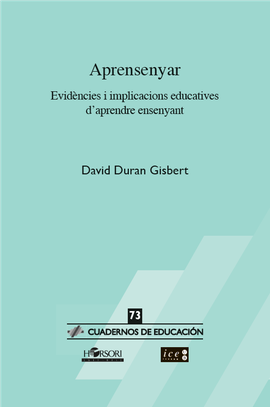
Duran, D. (2016). Aprensenyar: Evidències i implicacions educatives d’aprendre ensenyant. Horsori.
From the widespread perception that teaching can be a good way to learn, this book invites us to discover through scientific evidence that actually teaching others, in certain circumstances, can report learning for who is teaching. For this reason the book has been titled Aprenseñar -from aprender (learning) and enseñar (teaching) a new word in Spanish that the author has fabricated for the occasion, and which summarizes his idea, the possibility of learning by teaching.
You can read some reviews of the book in here.
Duran, D., Flores, M., Oller, M., Thomson-Garay, L., & Vera, I. (2016).Reading in pairs: Peer tutoring for reading and speaking in English as a foreing language. Horsori.
The book describes the programme Reading in pairs based on peer tutoring, with family involvement to improve English as a foreign language. The theoretical bases of the programme are described, as well as the guidelines for its implementation and assessment and the analysis of what competences are developed. The book also includes a chapter with initial research results. The last chapters provide educational resources for teachers, students and families, as Activity Sheets (including texts, questions before reading and reading comprehension questions) with Language Support (ideas for words and sentences to enrich the conversation) and Audio Files(recordings to provide models of good pronunciation and intonation). Examples of those materials can be found at http://grupsderecerca.uab.cat/grai/en/node/3882
The prologue is written by Markku Jahnukainen
Flores, M., Duran, D., & Albarracín, L. (2016).(En)Raonem en parella. Tutoria entre iguals per a la resolució cooperativa de problemes quotidians. Horsori.
The book describes (En)Raonem en parella, an educational programme aimed at improving skills in solving daily math problems cooperatively. This programme is based on peer tutoring and family involvement. The theoretical basis of (En)Raonem en parella are described, as well as guidelines for its implementation in the classroom and proposals for assessment. The book also includes a chapter with initial research results. The last chapters provide resources and educational materials for teachers, students and families.
The prologue is written by Claudi Alsina.
Flores, M., Duran, D., & Albarracín, L.(2016).Razonar en pareja: Tutoría entre iguales para la resolución cooperativa de problemas cotidianos. Horsori.
Spanish versión of the book (En)Raonem en parella. Tutoria entre igual per a la resolució cooperativa de problemes quotidians.
The prologue is written by Claudi Alsina

Duran, D. (2016). Tutoría entre iguales: Compartir la capacidad de enseñar con los alumnos. A R. M. Mayordomo & J. Onrubia (Coord.), El aprendizaje cooperativo (pp. 191-228). Universitat Oberta de Catalunya.
The chapter presents the conceptual bases of peer tutoring, checking its origin and current conceptualization, evidences of their effectiveness, frames explanation of learning for both tutor and tutee students, and analyzes the practical difficulties and ways to minimize or overcome them. In the second part, the author presents the programme Reading in pairs and provides evidences of its effectiveness.
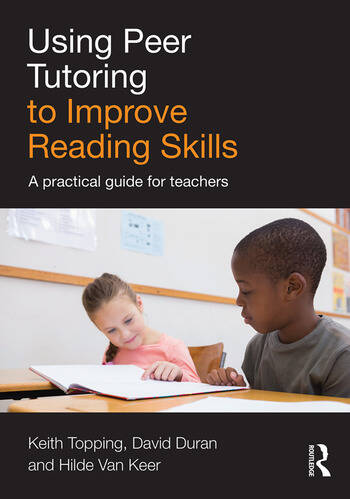
Topping, K., Duran, D., & Van Keer, H. (2015). Using Peer Tutoring to Improve Reading Skills. Routledge.
This book is a very practical guide, offering a straightforward framework and easy-to-implement strategies to help teachers help pupils progress in reading. A succinct introduction shows how schools can make positive use of differences between pupils and turn them into effective learning opportunities. The book is illustrated with practical practices from diverse schools across Europe, including our programme Reading in pairs.
Book review written by Marta Flores in Estudios sobre Educación.
Book review in Revista de Educación.
Book review in Revista Española de Pedagogía.
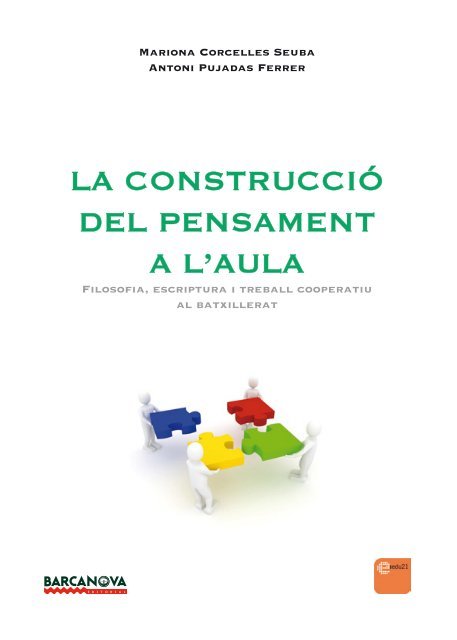
Corcelles, M., & Pujadas, A. (2015). La construcció del pensament a l’aula: Filosofia, escriptura i treball cooperatiu al batxillerat. Barcanova.
In this book, the authors aim to offer a proposal for learning philosophy through cooperative work and philosophical writing. They show the resources they use to build a philosophy learning community, based on a collaborative model of knowledge construction and the teaching of philosophical writing as two fundamental tools for learning to philosophize.
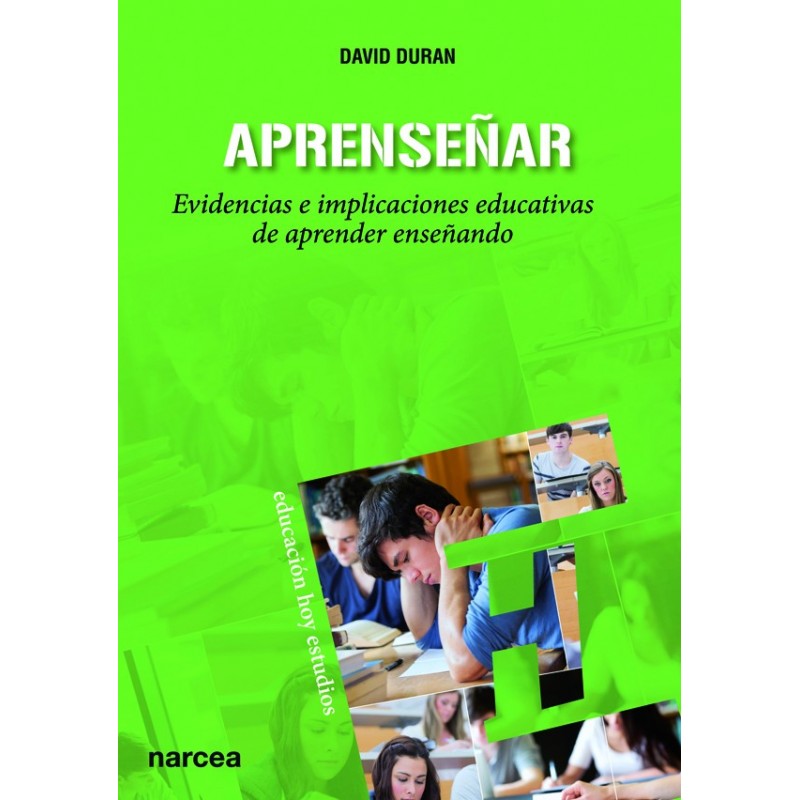
Duran, D. (2014). Aprenseñar: Evidencias e implicaciones educativas de aprender enseñando. Narcea.
From the widespread perception that teaching can be a good way to learn, this book invites us to discover through scientific evidence that actually teaching others, in certain circumstances, can report learning for who is teaching. For this reason the book has been titled Aprenseñar -from aprender (learning) and enseñar (teaching) a new word in Spanish that the author has fabricated for the occasion, and which summarizes his idea, the possibility of learning by teaching.
You can read some reviews of the book in here.
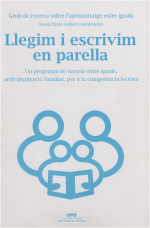
Duran, D. (Coord.), Blanch, S., Corcelles, M., Flores, M., Merino, E., Oller, M., & Utset, M. (2013). Llegim i escrivim en parella: Un programa de tutoria entre iguals, amb implicació familiar, per a la competència lectora. ICE de la Universitat Autònoma de Barcelona.
This book is a thorough update of the first edition and describes the programme in detail. This programme has been used and evaluated in a large number of centres. It provides resources and educational materials, both for students and families, in order to develop it easily to educational practice.
It provides examples of working materials for the three cycles of Primary Education and the first cycle of Secondary Education.
The book has prologues by Daniel Cassany and Carles Monereo.
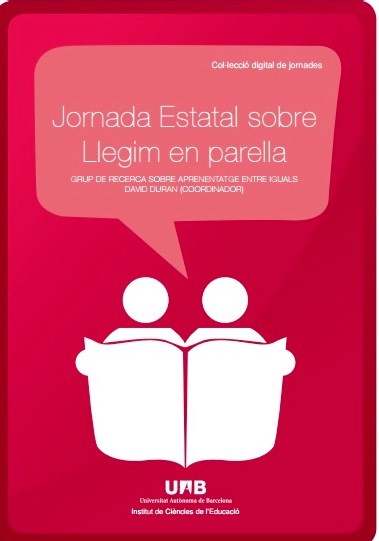
Duran, D. (Coord.), Blanch, S., Corcelles, M., Fons, M., Flores, M., Oller, M., Merino, E., Miquel, E., Utset, M., & Valdebenito, V. (2013). Jornada Estatal sobre Llegim en parella. ICE de la Universitat Autònoma de Barcelona.
In May 2012 took place the I Jornada estatal about Reading in pairs at the Universitat Autònoma de Barcelona, organised by GRAI and ICE with the support of the Departament d’Ensenyament de la Generalitat de Catalunya. The convention was a meeting point and reflection on practice and knowledge networks built by centres in Catalonia, the Basque Country and Aragon where they have implemented the programme Reading in pairs. It also was an opportunity to present this work to the educational community in general. This publication has the texts of interventions (conferences, workshops and communications), the posters that were presented and a photo report of the sessions. The texts are reproduced in the language in which they were presented due to the diverse origins of the participants.
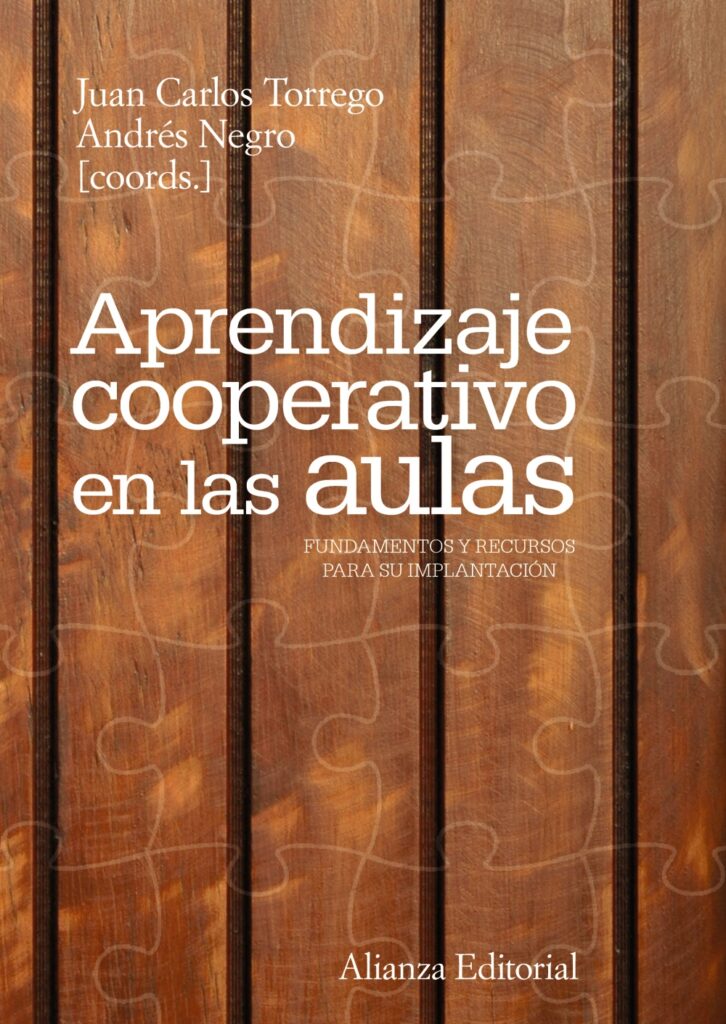
Duran, D. (2012). Utilizando el trabajo en equipo: Estructurar la interacción a través de métodos y técnicas. A J. C. Torrego i A. Negro (Coords.), Aprendizaje cooperativo en las aulas (pp. 139-166). Alianza Editorial.
The book is the result of the work that a number of prominent authors in this field carried out in a postgraduate course at the Universidad de Alcalá: Experto en aprendizaje cooperativo (Expert in cooperative learning). The book is divided into three main sections: foundations of cooperative learning, its implementation in school practices and, finally, the role of the teacher. The book -a real cooperative learning manual- is written by David Duran, Gerardo Echeita, Juan Manuel Escudero, Amador Guarro, Andrés Negro, Pere Pujolàs and Juan Carlos Torrego.
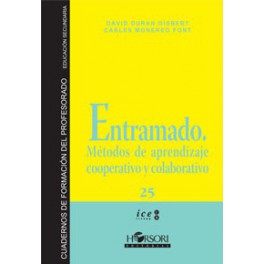
Duran, D., & Monereo, C. (2012). Entramado: Métodos de aprendizaje cooperativo y colaborativo. Horsori.
After an introductory chapter about peer learning, the book presents different cooperative learning methods (peer tutoring, jigsaw, group investigation, natural group…) to be carried out with students and teachers. Each method is presented through a story based within a secondary school context. The narratives – enable to see the method in action- has the support of a guide of the method showed. The book has been translated into Portuguese for Brasil (Artmed, 2004).
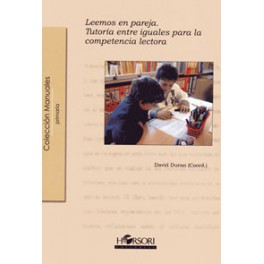
Duran, D. (Coord.), Blanch, S., Corcelles, M., Flores, M., Oller, M., Utset, M., & Valdebenito, V. (2011). Leemos en pareja: Tutoría entre iguales para la competencia lectora. Horsori.
This book is a manual for implementing the educational programme Llegim en parella (Reading in pairs), driven by the GRAI. The book provides a substantial upgrade compared with the first publication in Catalan, presenting the conceptual basis of the programme, its description and some supporting materials for teachers, students and families. It also provides some of the research outcomes regarding its implementation.
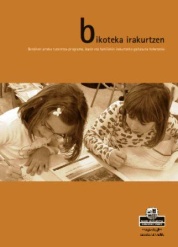
Duran, D. (Coord.), Blanch, S., Corcelles, M., Fernández, M., Flores, M., Kerejeta, B., Moliner, L., & Valdebenito, V. (2011). Bikoteka Irakurtzen. Servicio Central de Publicaciones del Gobierno Vasco.
This book is an adaptation of the programme Llegim en parella (Reading in pairs) to the Basque Country language and context. In addition to the bases, the description and programme support materials, we present the first results obtained from a sample of Basque schools.
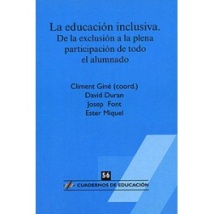
Duran, D. (2009). El aprendizaje entre alumnos como apoyo a la inclusión. A C. Giné, D. Duran, J. Font & E. Miquel (Coords), La educación inclusiva: De la exclusión a la plena participación de todo el alumnado (pp. 95-106). Horsori.
After reviewing the relationship between peer learning and inclusion, the following topics are discussed: the effectiveness of peer learning in vulnerable students, cooperative values in inclusive classrooms, and the need to universalise mutual assistance and to provide this assistance with educational value.
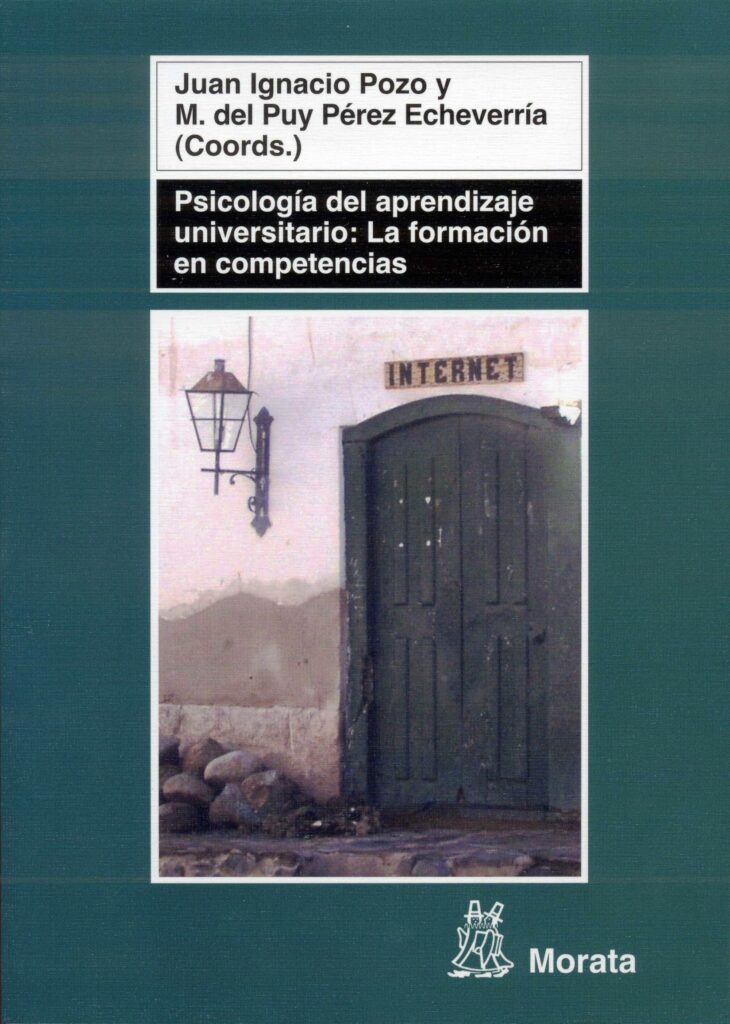
Duran, D. (2009). Aprender a cooperar: Del grupo al equipo. A J. I. Pozo i M. P. Pérez (Coords.), Psicología del aprendizaje universitario: La formación en competencias (pp. 182-196). Morata.
In this chapter cooperation and peer learning are placed in the university context, analysing difficulties and potentialities, strategies for implementation and assessment.
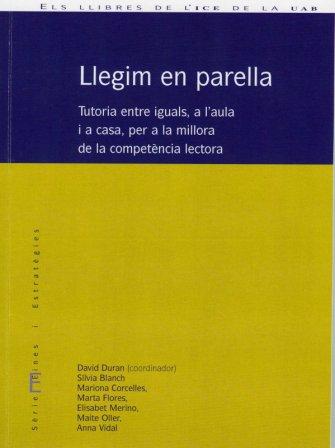
Duran, D. (Coord.), Blanch, S., Corcelles, M., Flores, M,, Merino, E., Oller, M., & Vidal, A. (2009). Llegim en parella: Tutoria entre iguals, a l’aula i a casa, per a la millora de la competència lectora. Publicacions de l’ICE de la UAB.
This publication brings together the educational program “Llegim en parella” driven by the research group on peer learning of the Institut de Ciencies de l’Educació (ICE). The programme is based on peer tutoring, a cooperative learning method, and combines tutoring among students and also family mentoring. Its aim is to improve the reading competence, a key element in the students’ school success. The book covers the conceptual foundations and the description of the programme by offering a set of materials in order to facilitate the implementation in schools.
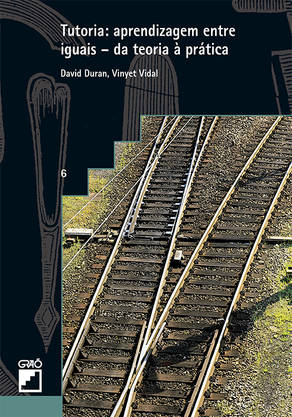
Duran, D., & Vidal, V. (2007). Tutoria: Aprendizagem entre iguais. Artmed. [Reeditat per Graó]
Portuguese translation for Brazil of the book Tutoría entre iguales: De la teoría a la práctica.
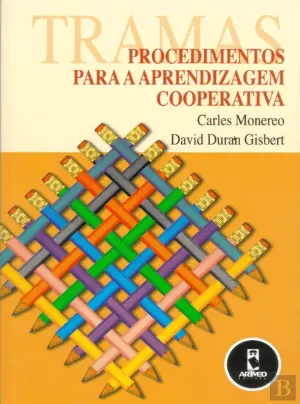
Monereo, C., & Duran, D. (2005). Tramas: Procedimentos para a aprendizagem cooperativa. Artmed.
Portuguese translation for Brazil of the first edition of the book Entramats, in which different cooperative and collaborative methods are presented through brief stories.
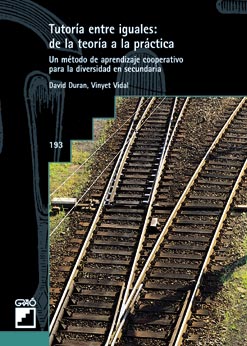
Duran, D., & Vidal, V. (2004). Tutoría entre iguales: De la teoría a la práctica. Graó.
After reviewing the conceptual basis of peer learning, and particularly of peer tutoring, the book presents in the second part tools to work with peer tutoring in secondary education, on the Spanish language and literature subject, including activities for both levels of ESO (secondary education) and a variety of guidelines for students and teachers.
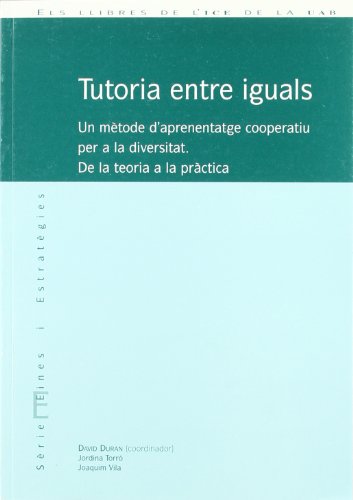
Duran, D. (Coord.), Torró, J., & Vilar, J. (2003). Tutoria entre iguals: Un mètode d’aprenentatge cooperatiu per a la diversitat. Servei de Publicacions de l’ICE de la Universitat Autònoma de Barcelona.
After reviewing the conceptual basis of peer learning, and particularly of peer tutoring, the book presents a practical proposal on an optional subject for Catalan language. Different resources for using in the classroom are included.